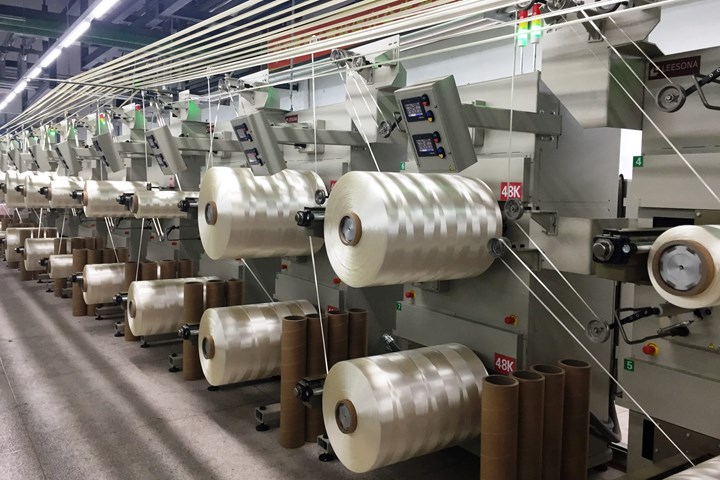CAMX 2022 exhibit preview: Leesona
Leesona showcases high-quality, precision, automatic and manual winding solutions that are capable of working with a range of composite materials and fiber thicknesses.
Share
Textile machinery company Leesona (Burlington, N.C., U.S.) manufactures precision automatic and manual take-up winders, as well as re-winders, spool/parallel winders and tension-controlled unrolling creels. A rewinding system for producing multiple-end, low-catenary tows is also available. All equipment can be configured and manufactured to meet customer needs and industry-specific applications.
Leesona says its machines can work with a wide range of fibers including carbon, fiberglass, aramid, carbon fiber precursor (PAN), ultra-high-molecular-weight polyethylene (UHMWPE), as well as other more traditional polymers like nylon or PET. Fiber thickness can range from heavy tows and small-diameter rope, down to 10-15 denier as needed. Leesona equipment is suitable for monofilaments, multi-filaments and various tape-type products and applications.
At this year’s CAMX, Leesona is promoting its range of PAN precursor take-up winders and suite of automatic doffing take-up winders. Offered in single-deck and double-deck options, the PAN take-up winders can work with multiple PAN roving sizes up to 50K (and beyond) while building packages up to 500 kg. Leesona also offers a machine capable of winding multiple ends (up to 32-ends) onto the same package with even tension, virtually eliminating catenary issues in the tow when unwound during pultrusion or other critical processes. The highly efficient auto-doff take-up winders save labor when compared to conventional manual-doff winders, yet without sacrificing features or functionality.
Leesona serves customers in the medical/health care industry with machines for winding monofilament and multifilament sutures, dental floss and other fibers for implantable medical knits or woven fabrics. Leesona also offers winders for applications such as tire cord, slit film tapes, artificial turf, as well as more traditional textile applications.
Related Content
-
Pultrusion: The basics
A primer describing what pultrusion is, its advantages and disadvantages, and typical applications.
-
Combining multifunctional thermoplastic composites, additive manufacturing for next-gen airframe structures
The DOMMINIO project combines AFP with 3D printed gyroid cores, embedded SHM sensors and smart materials for induction-driven disassembly of parts at end of life.
-
Large-format 3D printing enables toolless, rapid production for AUVs
Dive Technologies started by 3D printing prototypes of its composite autonomous underwater vehicles, but AM became the solution for customizable, toolless production.













